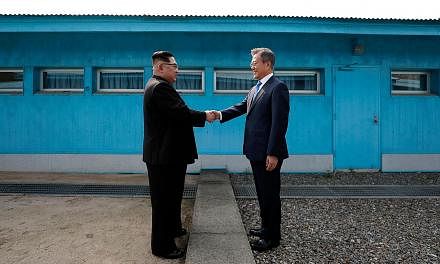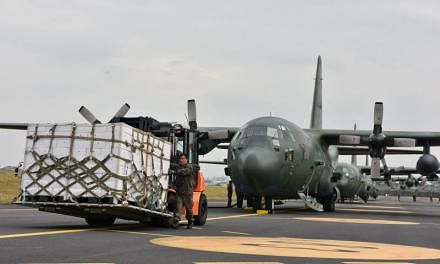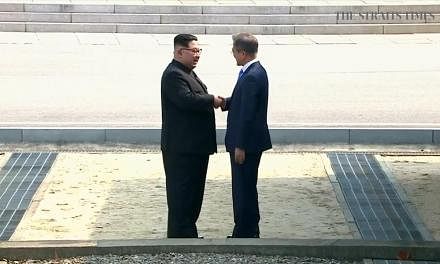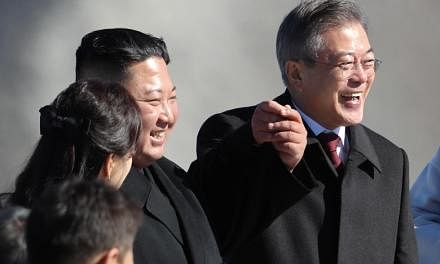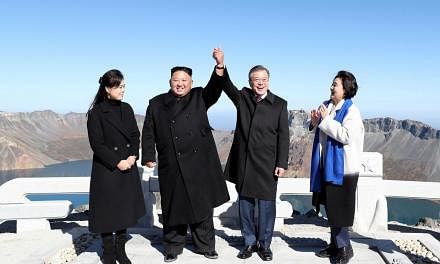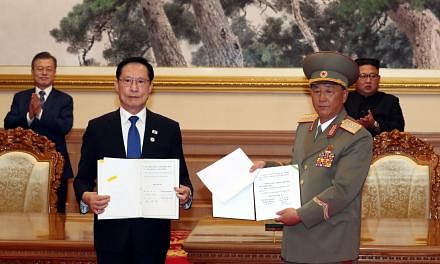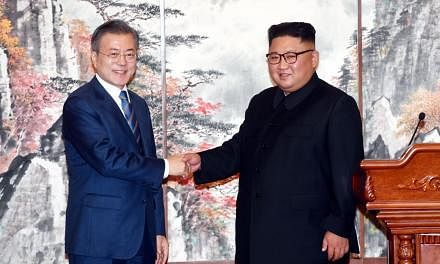Like his predecessors, United States Army General Vincent K. Brooks wears three hats: one as commander of US Armed Forces in Korea; another as commander of US-Korea Combined Forces Command; and the third, which is rarely known, as commander of the United Nations Command (UNC). One man wearing multiple hats signifies how the Korean War started and concluded, but never quite ended.
The UNC that Gen Brooks commands with his last hat was established by the United Nations Security Council Resolution 84 of July 7, 1950, 12 days after the outbreak of the Korean War.
This UN-facilitated military organisation represents the armistice regime and, sadly, the continuation of hostilities on the Korean peninsula.
Troops from the 16 states that came to South Korea's rescue were put under the command of the UNC. It still operates today and is ready to exercise its command should hostilities ever resume on the peninsula. In other words, Gen Brooks' third hat is a symbolic but important one for legal and military reasons.
Now, most likely, the US general is about to lose his 68-year-old UNC hat.
In a dramatic reversal of tides, at the inter-Korea summit meeting last Friday, South Korean President Moon Jae In and North Korean leader Kim Jong Un declared that they would pursue official termination of the Korean War within the year and replace the present armistice regime with a peace treaty.
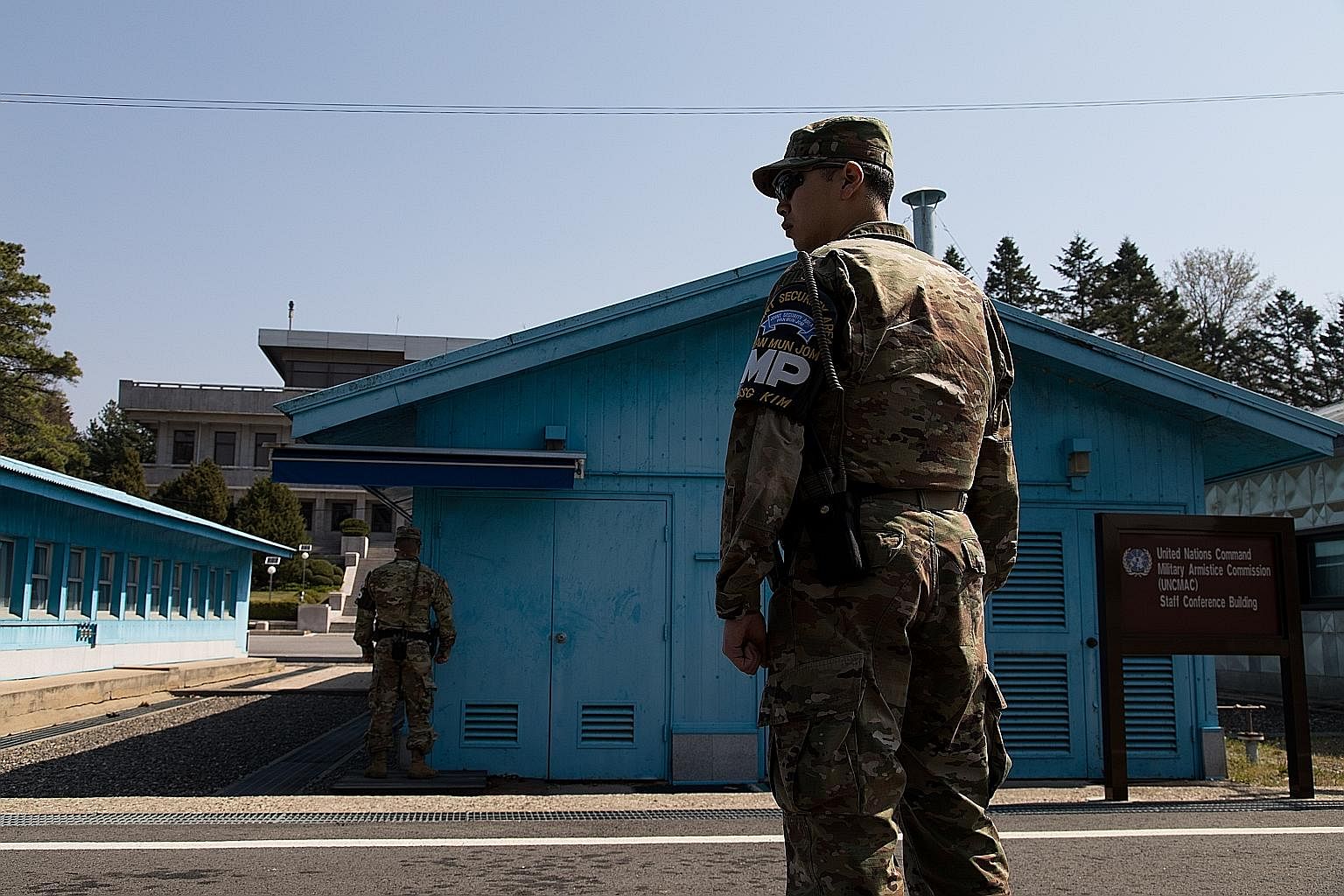
The same issue will also be tabled at the summit meeting between US President Donald Trump and Mr Kim likely to be held within two months, possibly in Singapore or at the truce village of Panmunjom, which was also the site of the inter-Korea summit.
People still hold their breath to figure out what this is all about: perhaps this is another attempt by the North to sell the same horse again; or perhaps this time the young North Korean leader is really into it and ready to sit down with the US and others for serious negotiations. The mood is positive but the outcome is still too early to tell.
In any event, for now, let's assume a face-to-face meeting in good faith is held between Mr Trump and Mr Kim.
One highly plausible scenario at the meeting is an exchange of mutual covenants involving an agreement from Pyongyang to Washington to scrap all its nuclear warheads and an acceptance of complete, verifiable and irreversible denuclearisation. In return, Washington is to offer Pyongyang a guarantee of non-aggression, which the North sees as necessary for the continued stability of its regime.
It is noteworthy that North Korea at this stage seems open to the continued presence of US armed forces on the peninsula.
By all accounts, these two covenants, if ever agreed, could be the first step towards the conclusion of a peace treaty, followed by normalisation of diplomatic relations.
Whatever the specific title the treaty may bear, the essence is the same: It will officially conclude the 1950-1953 Korean War and replace the present Armistice Agreement, effective since July 27, 1953, with a new legal regime on the peninsula.
The deconstruction of the armistice regime, however, entails potential far-reaching consequences.
The regime underpins a tightly knit network of military strategic operations involving the US, South Korea and other allies. Its disappearance would call for an overhaul of the existing system and network.
For instance, most immediately, a peace treaty challenges the existence of the UNC. With the official termination of the hostilities on the Korean peninsula, the UN-facilitated command specifically targeting North Korea as an enemy would lose its raison d'etre.
North Korea has long argued for dismantling the command upon the advent of a peace regime. Thus, chances are, a peace treaty with the North means Gen Brooks will lose his UNC hat.
Furthermore, the dissolution of the UNC is rather tricky because it has been the linchpin of the logistics support from US forces in Japan for US forces in South Korea.
Even today, the UNC Rear Command is located at Yokota Air Base in Japan, comprising small detachments from some of the 16 Korean War-participants, such as Australia.
In addition, several military bases in Japan are marked as UNC facilities. At present, in the unlikely situation of the resumption of hostilities on the Korean peninsula, this UNC Rear Command and bases in Japan are supposed to provide platforms for military support for the troops (made up almost entirely of US forces) to be sent to South Korea.
Japan concluded a Status of Forces Agreement (SOFA) with the UNC in 1954 to permit the presence of UNC forces in Japan, which is still effective today.
In short, the UNC is small and skeletal, but still up and running.
To quote Gen Brooks at the change of command ceremony held on Jan 29 this year at Yokota Air Base in Japan: The participation in the ceremony of representatives of UNC constituent countries "says an awful lot about the importance" of the UNC. One of his priorities is "to keep the UNC vital and relevant".
So, quite possibly, the dismantling of the UNC and its Rear Command means this critical linkage is now going to be missing.
A new trilateral treaty (or similar arrangement) between the United States, South Korea and Japan may fill the gap, but a treaty embodying military cooperation between South Korea and Japan will likely be too difficult to achieve due to the historical scars.
While a demand for the withdrawal of US troops from South Korea may not be in North Korea's game plan for now, assuming North Korea has finally changed its stance as reported, the introduction of a peace treaty inevitably forces significant changes in the structure of the multilateral cooperation system that has been in place for the past seven decades.
These changes, once made, may in turn have further, broader consequences.
The knock-on effects are another reason why great vigilance is needed in poring over the details before any final agreement is reached to dismantle the existing legal regime and start anew.
The hope is that the latest rounds of summitry may finally bring peace to the Korean peninsula. To accomplish this, a peace treaty is a must to terminate hostilities. But, at the same time, there is a lot of homework to be done with many legal questions to be tackled before the deal can be signed off. Coming to grips with dealing with the many questions that will arise will be immensely complicated, if not impossible.
• Jaemin Lee is Professor of Law with Seoul National University
